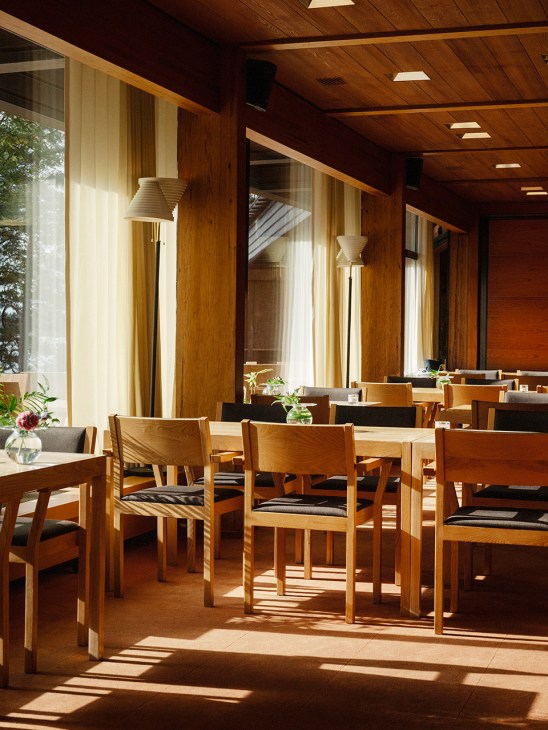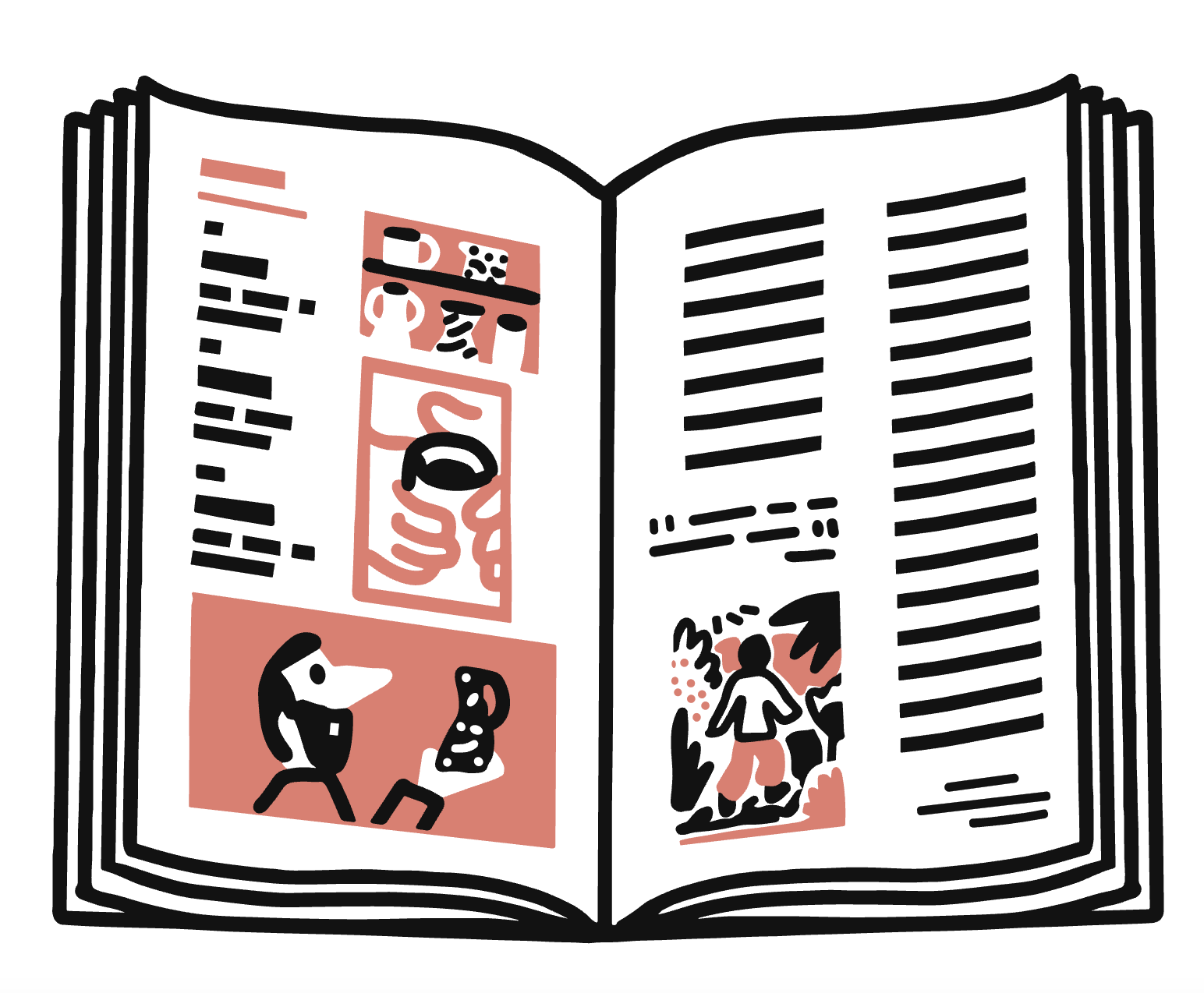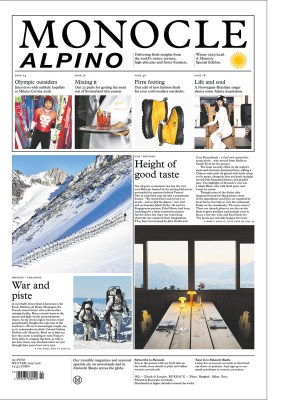Inside Hanaholmen, the secretive Nordic retreat where diplomats shape Europe’s future
On a small island off Helsinki is an institution where key political figures from Finland and Sweden meet to discuss geopolitical issues, in a space away from the pressurised corridors of power.
It’s a crisp autumn morning on Hanaholmen as military officers, politicians and think-tank members sip coffee beside the icy Baltic waters. All are either Finnish or Swedish and are performing a ritual that has taken place here every few months for the past 50 years. This small island, a few minutes by boat from downtown Helsinki, is home to the Swedish-Finnish Cultural Centre, a literal (and littoral) manifestation of the two Nordic countries’ rock-solid ties.

Monocle is here to attend the Hanating defence and security policy forum, an annual event that aims to further sync already close defence ties. Inside, sheltered from the chilly winds behind floor-to-ceiling windows, attendees – who include both countries’ defence ministers – are discussing drone warfare, hybrid threats and the state of Nordic defence co-operation. Outside, on a terrace lined with stone sculptures and fringed by tall pine trees, the air feels lighter, as does the conversation. “I took a dip in the sea last night, followed by a sauna – that’s how you do it, right?” we overhear a Swedish diplomat ask a Finnish counterpart.

Hanaholmen has always been a place where serious discussion takes place in a calm environment. “It’s not just a building,” says Charly Salonius-Pasternak, the CEO of geopolitics consultancy Nordic West Office and a longtime visitor. “It represents the bilateral relationship. It’s a place where ministers, researchers and bankers meet, but it’s also somewhere you can go and dip your toes in the water. It’s not an embassy or a government office. It’s a neutral third space with rich cultural layers.”
Founded in 1975 on a verdant island in the Gulf of Finland, Hanaholmen was created as a gesture of reconciliation and trust. Sweden had forgiven a substantial chunk of Finland’s postwar debt and Helsinki’s way of saying thank you was to invest its goodwill in something lasting – a shared space for dialogue and co-operation. The result is extremely Nordic: a low-slung, honey-toned complex of modernist glass-and-concrete buildings designed by Finnish architect Veikko Malmio. It’s a notable example of 1970s design from the region that still looks contemporary.




Sitting in an orange Yrjö Kukkapuro Junior 417 chair, Hanaholmen’s CEO for more than 20 years, Gunvor Kronman, reflects on the centre’s mission. “Hanaholmen was founded 50 years ago to make sure that the relationship between Finland and Sweden continues to grow,” she says. “It covers all parts of society. We were called a cultural centre for practical reasons during the Cold War but our mandate has always been broad. It includes everything from defence and security to economic development.”
Over the years, this mandate has been expanded further. Kronman describes Hanaholmen as “semi-official, semi-private”, an organisation that can discuss things that are too sensitive for statespeople to speak about publicly but too important to overlook. “We can take initiatives that governments can’t,” she says. “If we fail, it’s our failure. If we succeed, it’s our partner’s success.” Among its programmes are the Hanaholmen Initiative, a crisis-preparedness scheme launched during the coronavirus pandemic; Tandem Leadership, a year-long training network for emerging decision-makers; and Tandem Forest Values, a research collaboration on sustainable forestry. “We believe in personal relationships,” says Kronman. “When people know each other, there’s trust. Trust is the Nordic gold.”



This is built not only through conversation but also setting. Hanaholmen’s interiors exemplify Nordic simplicity: pale wood and clean lines, with furniture and fittings designed by Finnish and Swedish icons. The island houses more than 300 unique artworks, its own gallery and a sculpture park. “Each artist spends time here and picks their location,” says Kronman. “It takes about a year from idea to installation. We don’t want to rush the process.” A recent renovation, completed in 2017 by Helsinki-based design studio KOKO3, honoured the building’s 1970s identity while updating it for 21st-century use. “Moving from the centre of Helsinki to Hanaholmen feels like entering into a different rhythm,” says Jukka Halminen, a partner at KOKO3. “It’s similar to a Finnish sauna ritual: you slow down, breathe and calm down. We wanted the design to support that feeling.”
KOKO3 used natural materials such as brass, oak and stone to keep the original texture of the place, while adding touches from classic Swedish design house Svenskt Tenn to brighten and warm the interiors. The result is neither nostalgic nor sleekly new; it feels lived-in, timeless and quietly Nordic. “We wanted to keep the dialogue between Finland and Sweden visible in the design choices,” says Halminen. “It’s about balance: heritage with lightness, seriousness with joy.” You can feel the same balance at Plats, the island’s restaurant. Hanaholmen’s in-house fisherman, Christer Hackman, catches perch and pike, forages mushrooms and berries, and supplies the kitchen with wild herbs. The menu marries Finnish ingredients with classic Swedish dishes, served in dining rooms that glow with light timber and the burning logs of fitted fireplaces. “Food is an essential part of Hanaholmen,” says Kronman. “It creates a different atmosphere. Sharing a meal changes the tone of a political discussion.”



For those not lucky enough to be a Nordic diplomat, Hanaholmen is also a hotel. The swimming pool and glass sauna, which looks out to sea, are among the most popular in the Finnish capital. “We might be small [66 rooms] but we’re a significant meeting place,” the hotel’s director, Kai Mattsson, says as he shows Monocle around the building’s top-floor suite. “Every weekday there’s something happening. It can be 200 delegates one day and a honeymooning couple the next.” Mattsson describes the hotel as both an engine and enabler. “The commercial side helps to finance the cultural side but it’s also part of the experience,” he says. “People come here for seminars and to discover the art, the design, the nature. It’s not your typical conference hotel.”
Hanaholmen’s blend of architecture, art and natural beauty reflects the belief that soft power becomes tangible through space. “No matter how tough the subject, we try to maintain integrity and decency in conversation,” says Kronman. “That’s how we contribute to an open, democratic society.” At the Hanating forum, that spirit is writ large. Finland’s defence minister, Antti Häkkänen, and his Swedish counterpart, Pål Jonson, are engaged in discussions that mingle military strategy with cultural diplomacy. “Hard defence must be strong,” Häkkänen tells Monocle. “But the political landscape – how voters and politicians perceive the world – that’s soft power and it’s very important. Institutions such as Hanaholmen keep our societies aligned over issues such as Russia and European security.” His Swedish colleague adds, with a grin, “I mostly work with guns, bombs and hard military power but I still value the cultural exchange that Hanaholmen represents.”
Perhaps no one captures this exchange better than Sweden’s hirsute ambassador to Finland, Peter Ericson. “It’s a tremendous asset for the relationship,” he says, referencing the staff and resources at Hanaholmen’s disposal. “I call it a symbiotic relationship: Hanaholmen is the elephant and we at the embassy are the little bird sitting on its back.” He gestures towards the centre’s lobby, which displays photographs of distinguished visitors, including monarchs, ministers and artists. “It’s independent,” he says. “It isn’t part of official diplomacy. Sweden and Finland supervise it together but it is its own foundation. And it has this formula: bring people from both sides, house them, feed them and give them the space to work together. Fifty years ago, it was mostly a cultural exchange; today, it involves anything from defence and civil preparedness to youth issues or the environment. That’s its strength.”


The seasoned diplomat struggles to think of a similar institution anywhere else in the world. “Hanaholmen is unique,” he says. “An embassy symbolises a country. Hanaholmen symbolises the relationship itself.” This distinction might explain its lasting significance. In a world that is increasingly driven by summits, video calls and transactional diplomacy, it represents something older and subtler – the gradual building of trust through shared experience and conversation. At Hanaholmen, diplomacy isn’t performed but practised. “We believe in identifying the right people who should know each other,” says Kronman. “From that, many good things will come.”
This approach resonates beyond Finland and Sweden. The centre has hosted a range of figures, including the Nordic royal families, prime ministers and popular actors such as Mikael Persbrandt. Fifty years after Hanaholmen was opened by the Swedish king, Carl XVI Gustaf, and Finland’s then-president, Urho Kekkonen, the Nordic region, once viewed as a quiet corner of Europe, now finds itself on the front line of geopolitical change. After decades of neutrality, Finland and Sweden are now NATO members. Defence committees from their respective parliaments meet here regularly; they are doing so on the day that Monocle visits. Amid discussions on deterrence and hybrid warfare, soft power is still the centre’s guiding light. “Hard power is obvious – Ukraine reminds us of that,” says Ericson. “But soft power is what keeps our societies attractive and resilient. We don’t have to deceive people to be liked. We just have to be our best selves.”

Digital diplomacy and rotating presidencies can’t replace the continuity that is offered by a physical site. Hanaholmen’s architecture, art and cuisine aren’t just decorative – they’re part of the dialogue. As the afternoon light dims over the Baltic, the conversation on the terrace shifts from air defence to pan-fried Arctic char. It feels both ordinary and extraordinary – the kind of quiet, human-level contact that supports deep Nordic co-operation.


